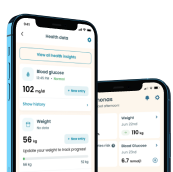Diabetes Mellitus: Types, Symptoms, and Treatment

If you’re familiar with diabetes mellitus, or simply diabetes, you may be aware of the two common forms, type 1 and type 2. However, did you know that there are other types out there? These include gestational diabetes and a form that is often called type 1.5. These are just the main forms as diabetes covers a huge group of metabolic disorders, with most of them possibly causing long-term damage if untreated.
What all these conditions have in common is that the body does not have sufficient insulin to use the energy from food. Insulin is required to convert the sugar available from food into fuel that is carried to all cells in the body.
What Are the Symptoms of Diabetes Mellitus?
Most forms of diabetes have similar traits. These are related to the body’s inability to use energy from food and causing excess sugar in the blood.
You can have diabetes and not even know it, much like 7.2 million people in the US. Or you may have prediabetes, like a whopping 84.1 million, according to statistics.
That is why it is important that you are familiar with the many indications of diabetes, such as:
- Increased urination
- Increased thirst
- Weight loss
- More hunger, despite eating normally
- Nausea
- Vomiting
- Frequent urinary or yeast infections
- Blurred vision
- Dry skin
- Slow-healing wounds, infections, or sores
- More dental problems, including bad breath and cavities
- Pain, numbness, tingling in the feet
If you have one or more of these symptoms, even if you attribute them to something else, do consider getting a blood sugar test. Diabetes is best treated in the early stages so that you can take appropriate steps to prevent any later complications.
Causes of Different Types of Diabetes Mellitus
Diabetes is quite a variable disease as people might not necessarily attribute to one specific type – they might have combined symptoms. As of today, these are the few most commonly discussed and experienced forms of diabetes:
Type 1 Diabetes
This is an autoimmune disease and affects a small percentage of people with diabetes. The immune system damages the pancreas in such a way that it is unable to manufacture insulin. It was earlier known as juvenile diabetes because it’s more prevalent among the younger population, including children.
Type 2 Diabetes
This form of diabetes occurs in the majority of people with diabetes. It is also known as Non-Insulin Dependent Diabetes Mellitus (NIDDM) and is diagnosed predominantly in adults. It develops due to two reasons: either the pancreas does not make enough insulin, or the body’s insulin sensitivity decreases, so it is unable to use the insulin efficiently. Sometimes both factors co-exist.
Gestational Diabetes
Pregnancy causes many hormonal changes in a woman. These can disrupt the normal balance of sugar and insulin and cause high blood sugar, resulting in gestational diabetes. If gestational diabetes is not diagnosed and managed, it puts the mother and the baby at risk for various complications.
Type 1.5 Diabetes
Often called type 1.5 diabetes mellitus, it is known as latent autoimmune diabetes in adults (LADA). It is a combination of type 1 and type 2 diabetes and may be mistakenly diagnosed as only the latter.



It actually occurs when the immune system kills the insulin-producing cells (much like type 1 diabetes). It can be diagnosed with a blood test known as the GAD antibody test. If it is positive, your doctor may diagnose LADA.
Treatment Options
The good thing about diabetes is that it can be treated, regardless of its type. Patient compliance is very crucial to treat diabetes. No matter which form or combination you have, you have to achieve a balance between your sugar levels, your diet, and your activity. And you have to take your insulin or medications as prescribed by your doctor. If you neglect even one aspect, you can face minor or major diabetes complications.
Treatment for Type 1 Diabetes
Type 1 diabetes requires external insulin. You can take this in the form of injections at regular intervals or get an insulin pump attached to your body, which will release the insulin (usually rapid-acting insulin) in preset quantities at programmable times. You can also get pre-filled insulin syringes to use.
Now there are many different kinds of insulin available, making it easier to control your condition. You can get:
- Rapid-acting insulin – it works between 2.5–20 minutes of injection, and its effects last up to 5 hours.
- Long-acting insulin – this starts working after about 30 minutes. This insulin can be taken once (rarely twice a day) as its effects last for 24 hours.
- Intermediate-acting insulin – this is background or basal insulin. It takes effect 60–90 minutes after injection and can last for up to 24 hours.
- Mixed insulin – many different premixed variations of rapid or short-acting insulin with intermediate-acting insulin are available.
Depending on a variety of factors, including your sugar levels, your doctor may prescribe one or more insulin types.
Treatment for Type 2 Diabetes Mellitus
Your doctor may prescribe one or more medications for treatment to get the sugar levels under control. These may include:
- Metformin – works by reducing the liver formation of glucose and improving glucose sensitivity.
- Sulfonylureas – increase the formation of insulin.
- Glinides – help the pancreas make more insulin faster than sulfonylureas.
- Thiazolidinediones – enhance insulin sensitivity.
- DPP-4 inhibitors – work by reducing blood sugar levels.
- GLP-1 receptor agonists – work by slowing digestion and lowering sugar.
- SGLT2 inhibitors – stop the return of glucose from urine into the bloodstream.
As a last resort, you may be prescribed some insulin if the medicine is not helping you sufficiently.
Treatment for Gestational Diabetes
Gestational diabetes can put both the mother and baby at risk. When diagnosed, it is usually treated by a combination of diet and exercise. However, if sugar levels do not meet the required criteria, you may be prescribed metformin or insulin injections.
At the same time, blood sugar monitoring on a regular basis is necessary since sugar levels fluctuate as the pregnancy advances. After the birth of the baby, gestational diabetes usually resolves on its own. Although the blood sugar levels often return to normal after the birth of the baby, women with a history of gestational diabetes have an increased risk of developing type 2 diabetes in subsequent years, so attention to prevention with lifestyle modification is very important for women who previously had gestational diabetes.
Treatment for Type 1.5 Diabetes
This kind of diabetes is usually treated with non-insulin medicine initially. As the disease progresses, it can advance to type 1 diabetes, when you need insulin instead of or in addition to the non-insulin medication. This form takes a long time (many months or even years) to turn from type 1 to type 2.
No matter the kind of diabetes you have, diet and exercise have an essential role to play in managing the disease. Additionally, regular monitoring of blood sugar levels is crucial so that you catch any signs of high blood sugar at an early stage and modify your treatment measures, insulin intake, or diet as required.
Uncontrolled blood glucose levels can lead to many complications, including neuropathies that are often irreversible and cause organ damage. Diabetes mellitus is also a causative factor in cardiovascular problems like heart disease and stroke.
Key takeaways:
- Diabetes affects millions – you may have undiagnosed diabetes or pre-diabetes without knowing it.
- Be knowledgeable about the common symptoms of diabetes – different forms are still present with similar symptoms.
- Different types of diabetes can be managed – taking the right medications or insulin at the correct timings, watching your diet, and indulging in exercise are healthy ways of managing the condition.
- Beware of its complications – diabetes mellitus, if not well-controlled, can cause organ damage, neuropathies and put you at greater risk of many serious diseases.
Take a quiz and get your diabetes-management plan today!









